Comments and Stored Procedure in SQL – Syntax and Example
FREE Online Courses: Dive into Knowledge for Free. Learn More!
In this tutorial, we will be focusing on the SQL stored procedures and comments. Let us now dive deep into the comments and stored procedures in SQL.
What are SQL Comments and the need for Comments in SQL?
In any programming language, when different developers work on the same code, communication of what the code does or why certain changes are being done is important.
To maintain effective communication and proper flow of code from stage zero to the production level we require accurate comments on each piece of code.
Some of the major uses of comments are as follows:
- The code becomes more readable.
- Transfer of code from one developer to another.
- Helps in maintaining the code and keeping it in check.
We have two types of comments available in SQL:
1. Single Line Comment in SQL
Syntax:
-- Single Line Comment
2. Block Comment in SQL
Syntax:
/* this block is the part of Block comment */
What are SQL Procedures and their Needs?
We save redundant queries with short names so that they can be used anytime without the need of writing queries again and again.
Stored procedures in SQL are more like functions in high-level programming languages. The use of stored procedures helps in avoiding code redundancy and helps in enhancing the memory usage.
- To create a Procedure
Syntax:
Delimiter // CREATE PROCEDURE procedure name(parameters) BEGIN statements; END // Delimiter;
- To call a Procedure
Syntax:
CALL procedureName(arguments);
- To show all the Stored Procedures
Syntax:
SHOW PROCEDURE STATUS;
- To drop a Procedure
Syntax:
DROP PROCEDURE [IF EXISTS] procedureName;
Demo Database
Technology is evolving rapidly!
Stay updated with DataFlair on WhatsApp!!
Let us now have a look at our database DataFlair.
Query:
SELECT * FROM DataFlair;
Output:
Let us now dive deep into the topics using examples of both Stored Procedures and Comments.
Example 1: Let us now understand the single-line comment in SQL.
Query:
-- This query shows us the database. -- The contents of DataFlair Database. SELECT * FROM DataFlair;
Output:
Example 2: Let us now understand the block comments in SQL.
Query:
/* This query shows us the database. The contents of DataFlair Database.*/ SELECT * FROM DataFlair;
Output:
Example 3: Let us now see how to create a procedure.
Query:
DELIMITER //
CREATE PROCEDURE viewEmployees()
BEGIN
SELECT * FROM dataflair;
END //
DELIMITER ;
Output:
Example 4: Let us now see how to call a Procedure.
Query:
CALL viewEmployees();
Output:
Example 5: Let us now see the total created Procedures.
Query:
SHOW PROCEDURE STATUS;
Output:
Example 6: Let us now see how to drop a Procedure.
Query:
DROP PROCEDURE GetAllProducts;
Output:
Summary
In this tutorial, we have seen what are Stored Procedures and Comments in SQL.
We have taken into consideration all the types of Comments in SQL, i.e. Single Line and Block Comments. We have seen that comments are used to avoid confusion in code and increase the efficiency of the code.
Stored Procedure is like functions in high-level languages where they help to reuse the query, which is used frequently. Stored procedures help us to save our query and access it whenever required.
We have seen examples of all the comment types and the cycle of creating and dropping a Procedure. With various examples, we have also covered the creation, viewing, and deleting of a created procedure.
If you are Happy with DataFlair, do not forget to make us happy with your positive feedback on Google
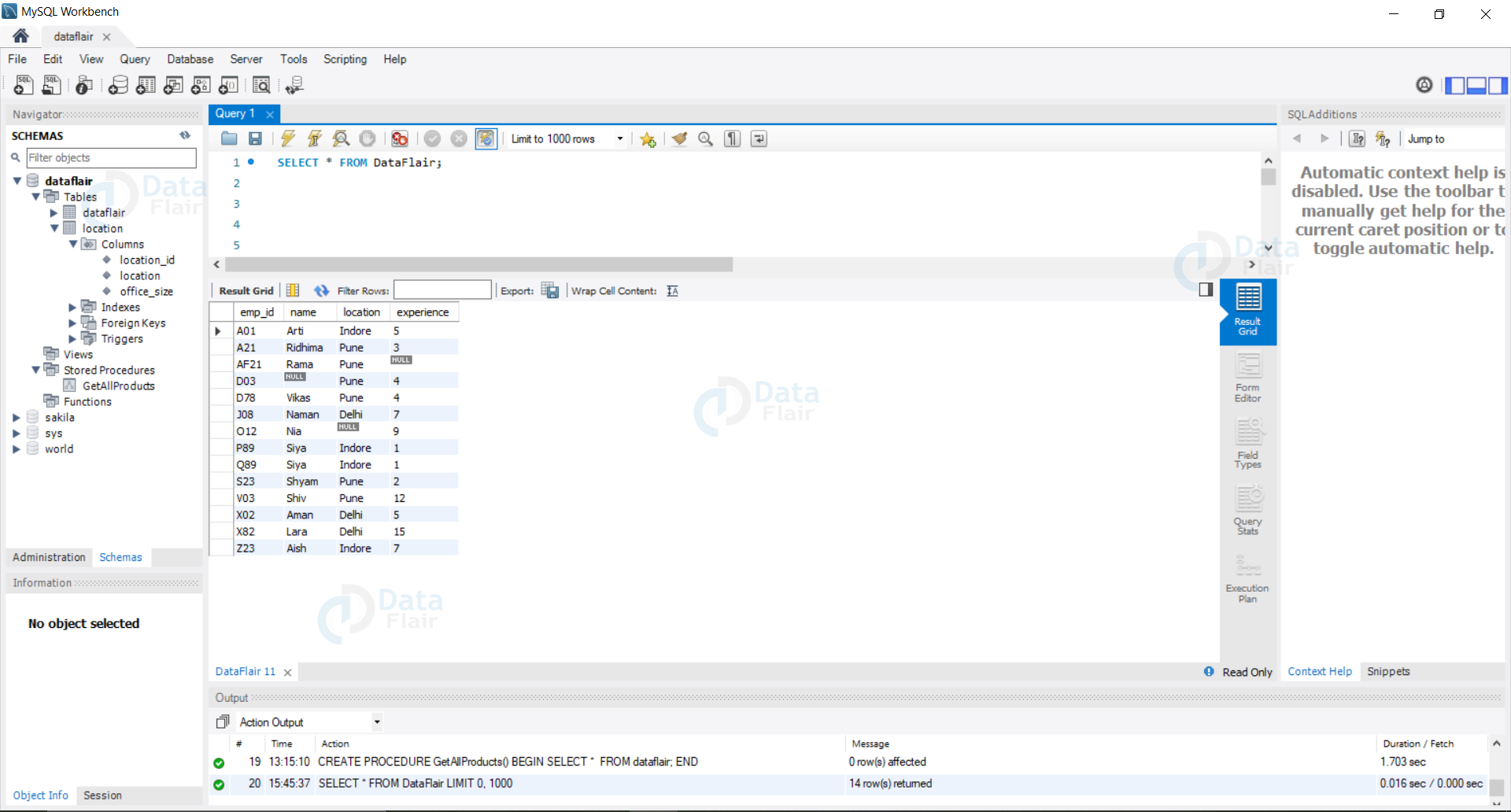
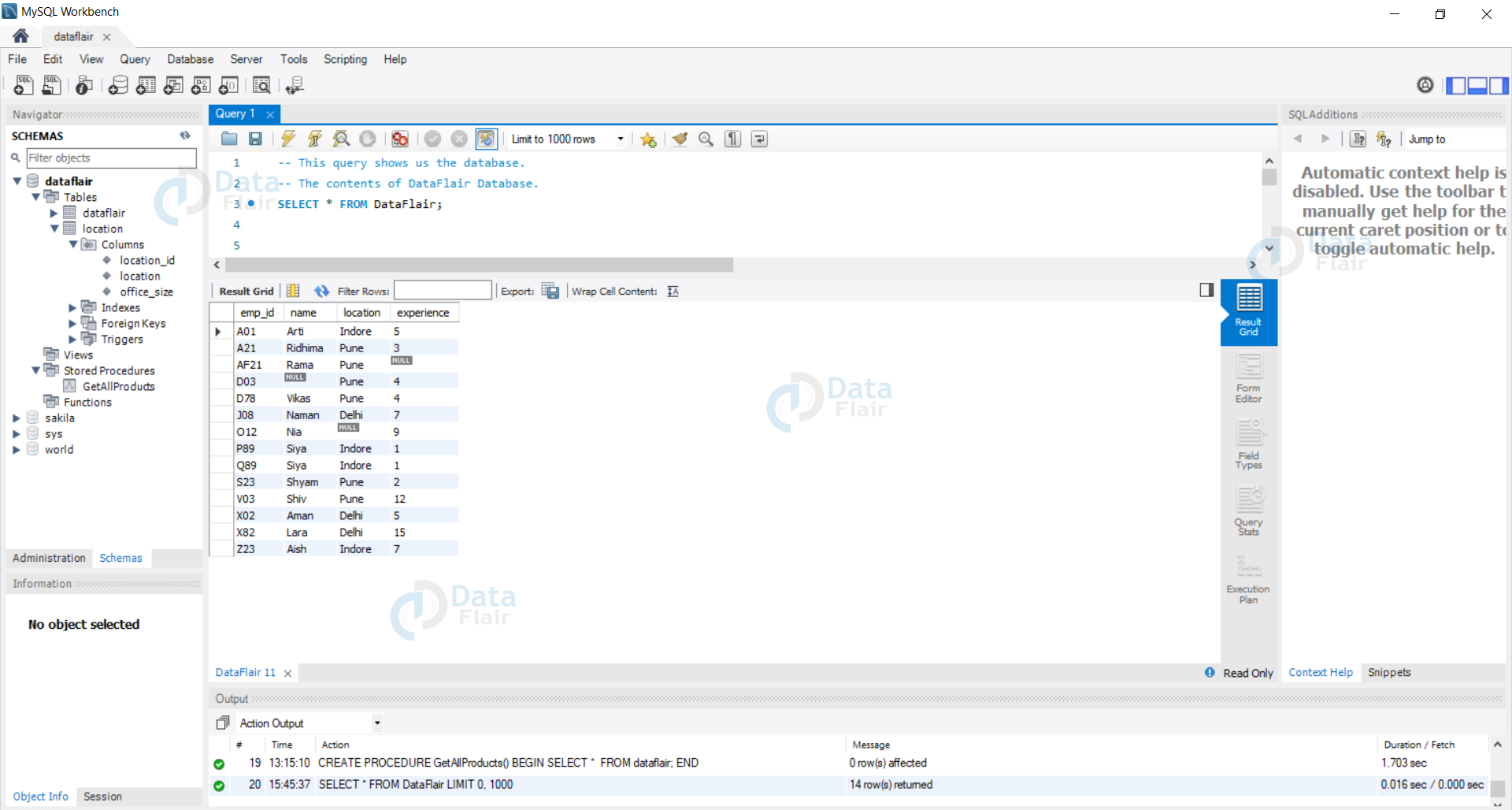
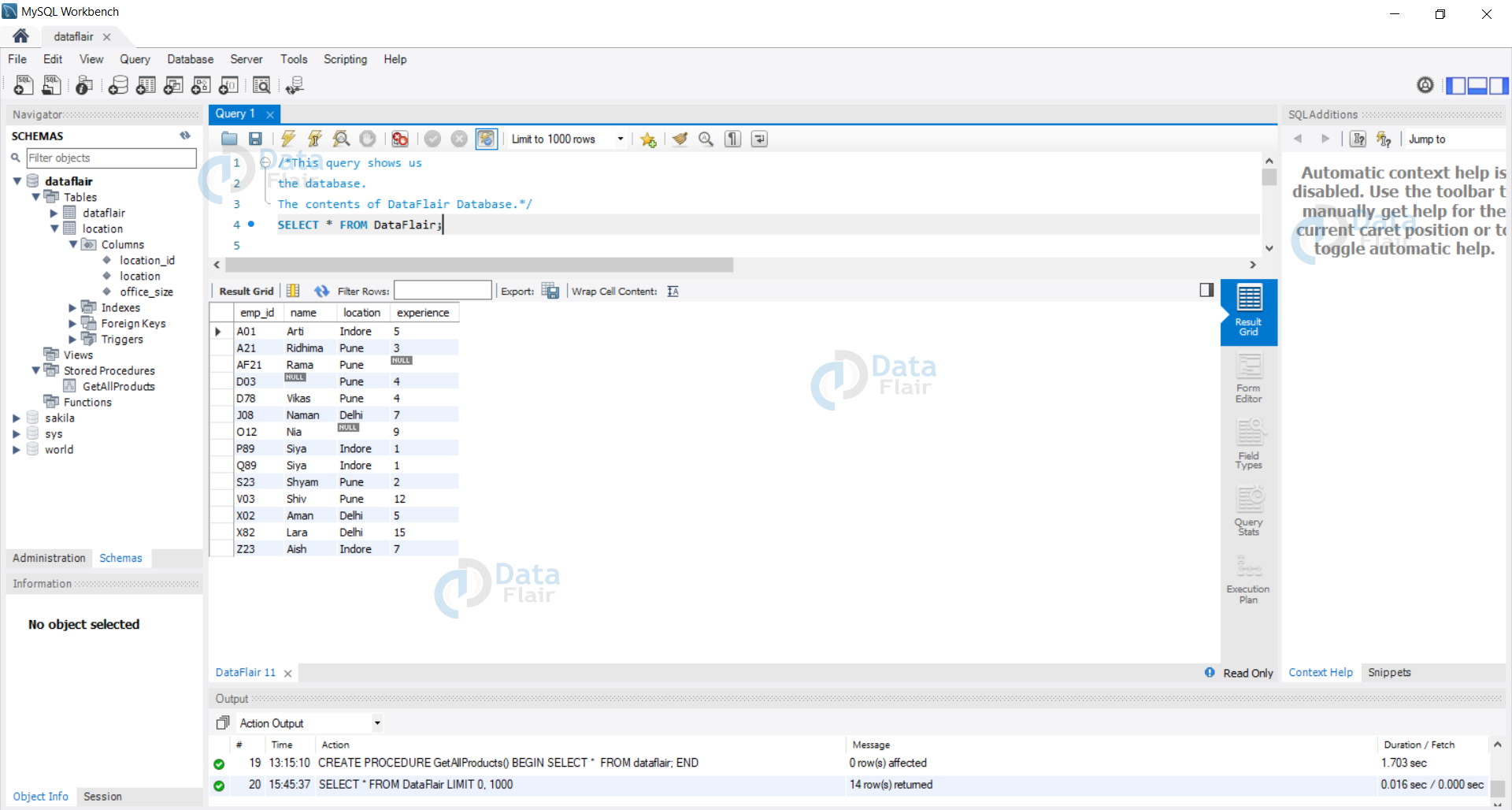
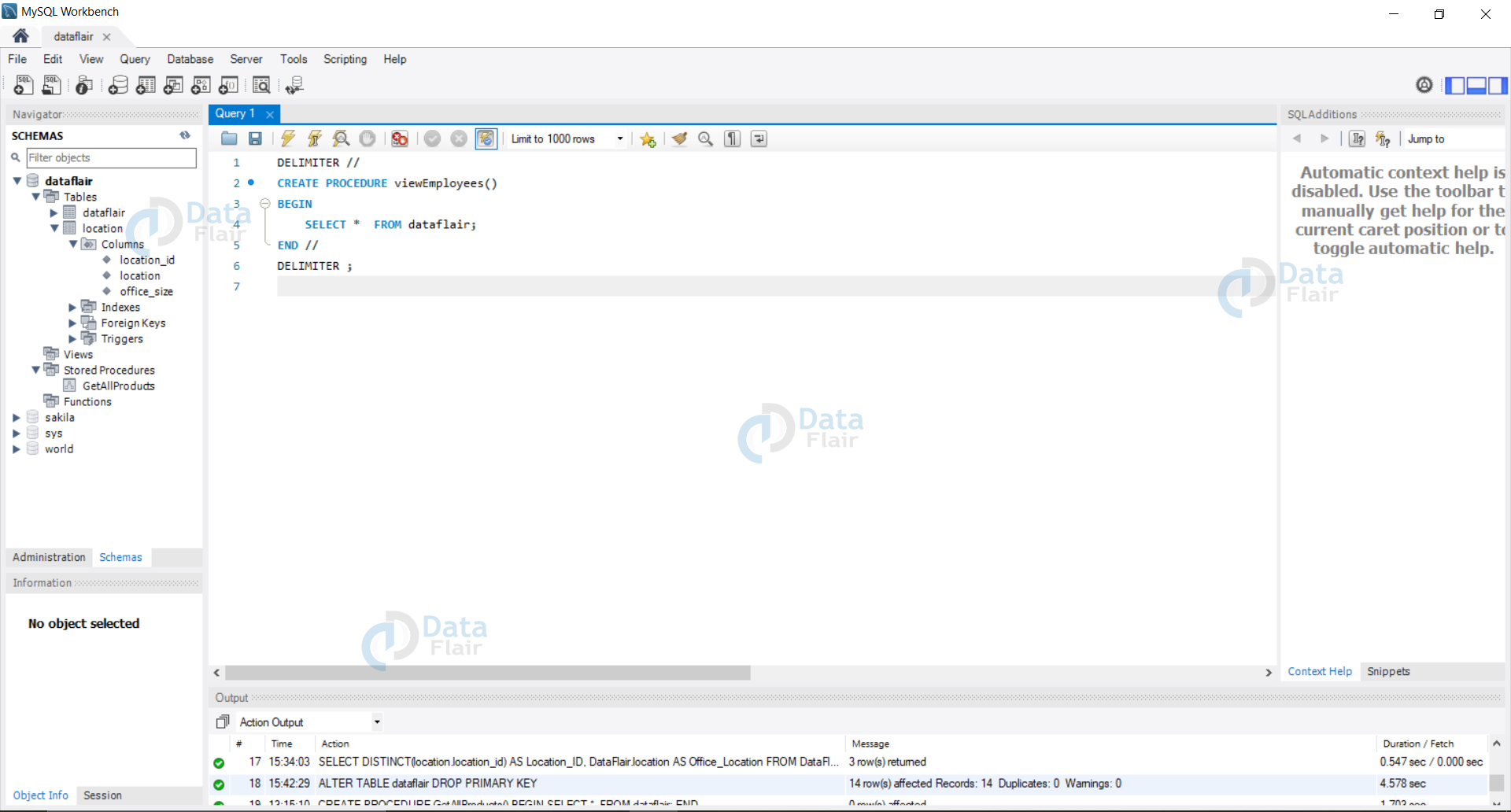
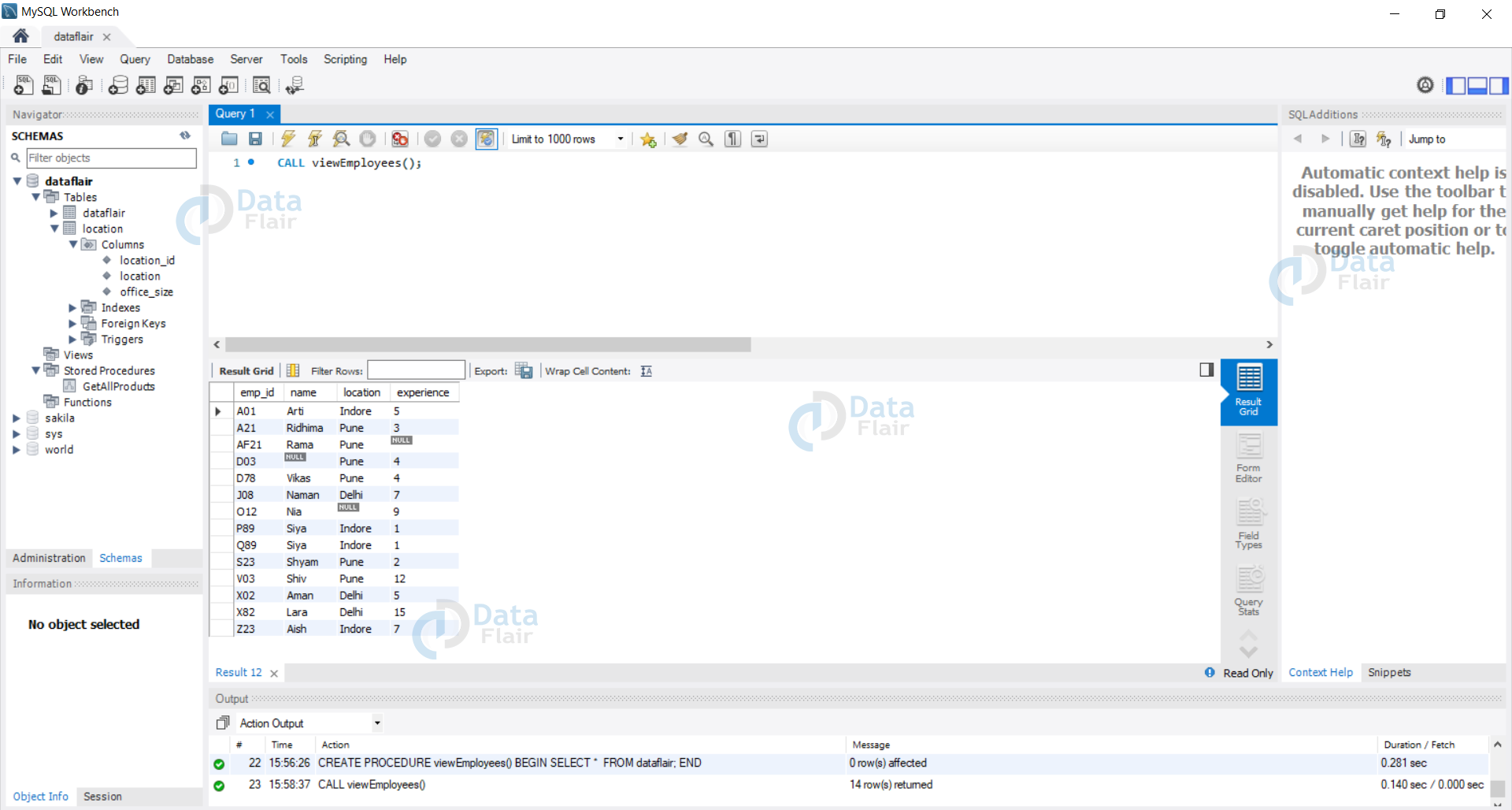
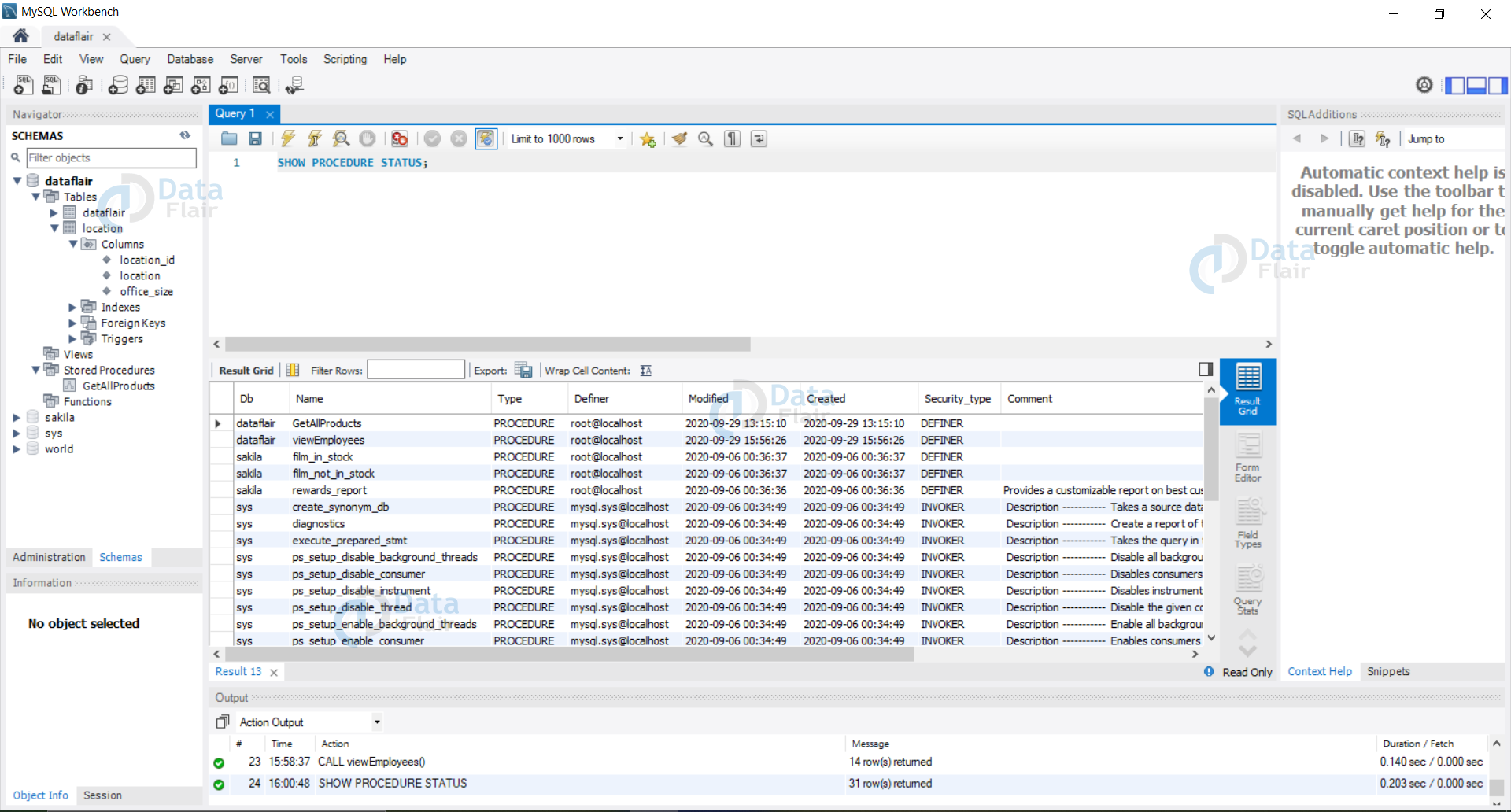
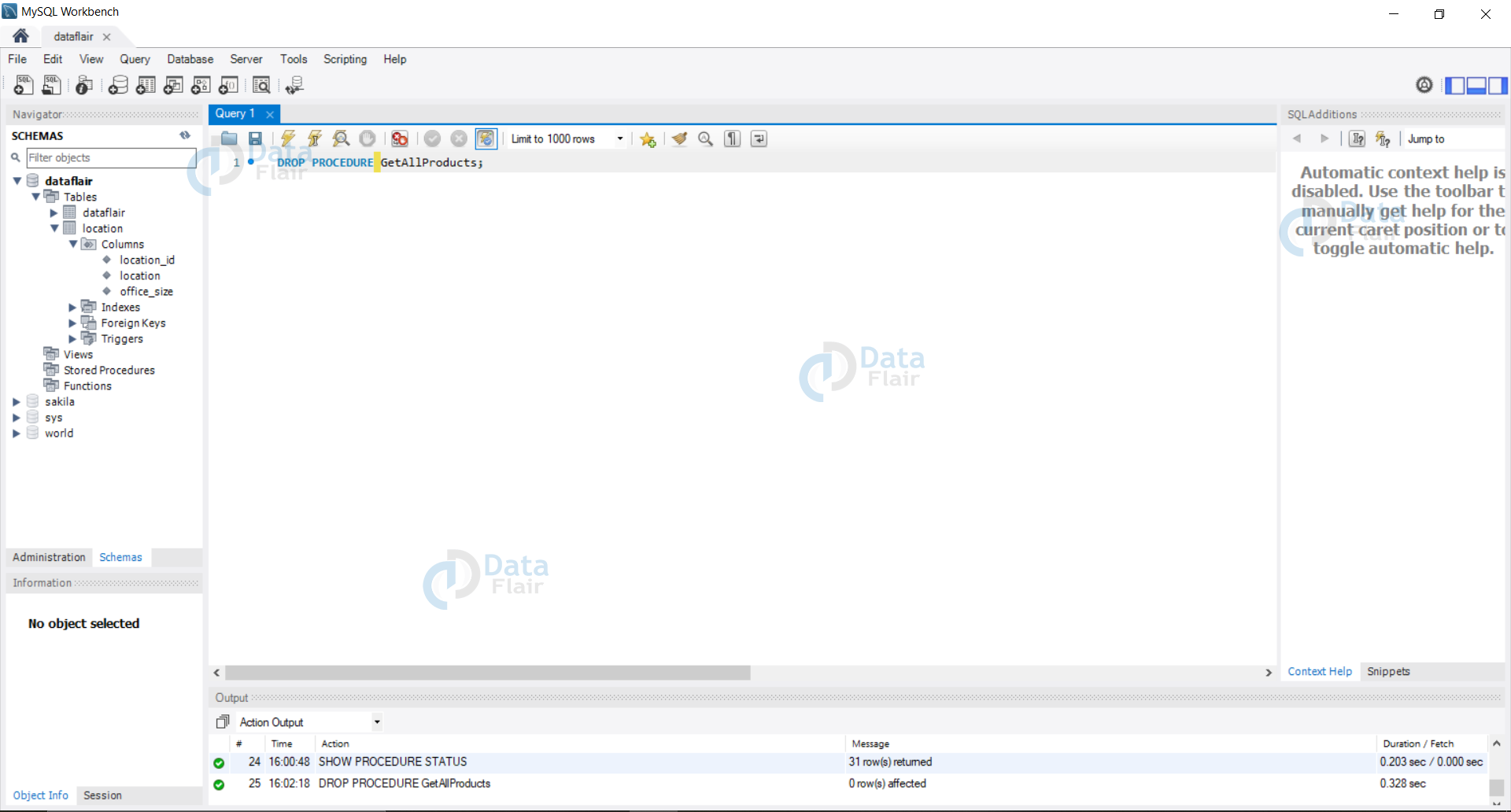


How many DDL and DML queries we can write in one Stored Procedure ?
Hi how to execute SP with multiple values for single parameter. In the above example suppose for city I want give two city names .
Also while executing above procedure is not working. but when I put @ symbol before parameter then its working.
please one suitable example of creating calling of stored producer